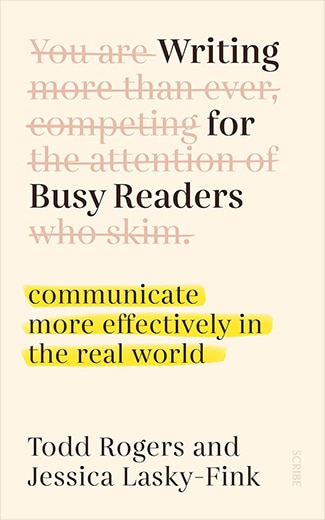
The 6 Principles for Writing Messages People Won't Swipe Away

The Art of Manliness
Deep Dive
Why is it important to understand that readers are often busy and skimming content?
Readers are often inundated with messages and have a fixed budget of time for reading. Making content easy to skim increases the chances they will engage with and understand it.
What is the connection between public policy and writing for busy readers?
Public policy often involves communicating with busy people, such as voters, families, and stakeholders. Effective communication ensures that these individuals understand and act on the information provided.
Why is effective writing not the same as beautiful writing?
Effective writing aims to deliver practical, clear information to busy readers, while beautiful writing often uses complex language and structure for aesthetic or literary purposes. The goals of the two styles are fundamentally different.
What are the real-world consequences of ineffective writing in public policy?
Ineffective writing can lead to non-compliance with important regulations, such as tax delinquency or court summons. It can also result in lower engagement and response rates, undermining organizational goals.
What is the four-stage process that readers go through when deciding whether to engage with a piece of text?
The stages are: 1) deciding whether to engage at all, 2) deciding when to engage, 3) deciding how deeply to engage, and 4) deciding whether to respond. Each stage involves different cognitive and time-based decisions.
How does 'less is more' apply to effective writing?
The more content you add, the less likely readers are to read, understand, and respond. Shorter, more concise messages increase engagement and effectiveness.
Why should writers use short and common words to make reading easier?
Short and common words reduce cognitive effort, making the text easier to read and understand. This increases the likelihood that the reader will engage with the content.
What is the BLUF (Bottom Line Up Front) rule and how does it help in effective writing?
BLUF is a military communication rule where the most important information is placed at the beginning. This helps readers quickly identify key points and reduces the chance of them missing crucial information.
How can formatting be used to make writing more effective, and what are common mistakes in formatting?
Formatting, such as bold and underline, helps highlight key information. However, overusing different formatting styles can confuse readers and make the message less effective. Use formatting sparingly and consistently.
Why is it important to tell readers why they should care about your message?
Emphasizing the relevance and value of your message to the reader increases their likelihood of engaging with it. Focus on the part of the content that the reader will value the most.
How can writers make responding to messages easier for the reader?
Simplify the request, provide all necessary information upfront, and use clear, specific questions. This reduces the cognitive load and effort required to respond, making the reader more likely to engage.
What is the balance between frequent communication and overcommunicating?
Consistent communication helps readers expect and recognize messages, but too much can lead to fatigue and decreased engagement. Tailor frequency to the reader's preferences and needs, and consider their context and past behavior.
Are there any AI tools that can help writers improve their effectiveness?
Yes, tools like GPT-4 can be trained on principles of effective writing to suggest edits that make messages easier to read and respond to. These tools can help writers apply the six principles of effective writing.
Shownotes Transcript
Think of all the texts, emails, and social media posts you're inundated with each day. Sometimes you read them, and sometimes you swipe them away, telling yourself, perhaps not so honestly, that you'll revisit them later.
If you're the sender of such missives and memos or the creator of content, you hope the recipient has the first response, that, instead of deep-sixing your message, they take the time to engage and take action on it.
How do you increase the odds of that happening? Rather than just guessing at the answer, Todd Rogers has done empirical experiments to discover it. Todd is a behavioral scientist, a professor of public policy at the Harvard Kennedy School, and the author of Writing for Busy Readers: Communicate More Effectively in the Real World). Today on the show, Todd explains the four-stage process people use in deciding whether to engage with your writing, whether in a personal or business context, and how influencing these factors not only comes down to the style of your writing, but its overall design. Todd offers tips to improve both areas, so that you can effectively capture people's attention.
Resources Related to the Podcast
- AoM Podcast #971: The 5 Factors for Crafting Simple (Read: Effective!) Messages)
- AoM Podcast #666: The Power of Brevity in a Noisy World)
- AoM Podcast #580: Why People Do (Or Don’t) Listen to You)
Connect With Todd Rogers
